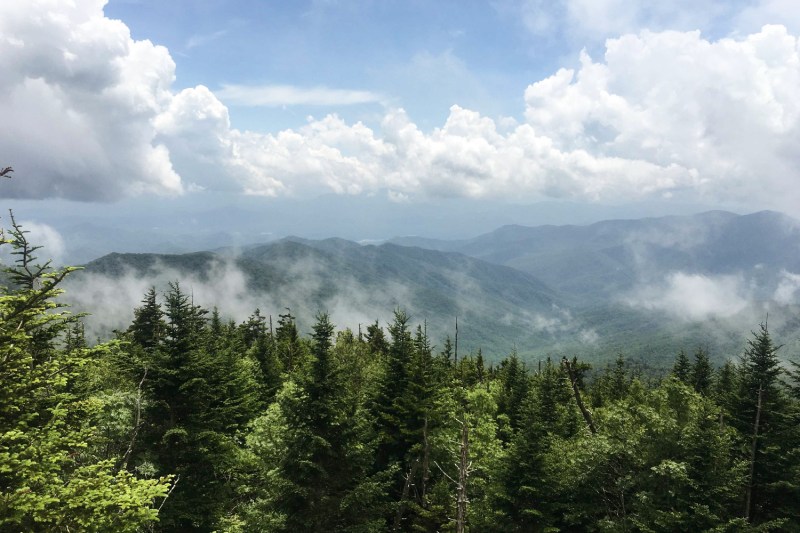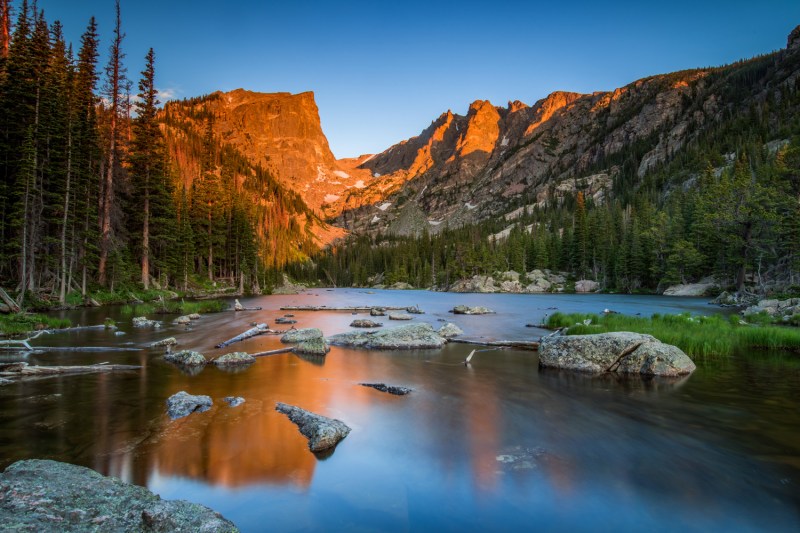Warmer weather is finally here, and now is the perfect time to dust off your spring hiking gear or best camping gear and begin exploring the great outdoors. What better place than one of our many U.S. National Parks? Some are well-known icons, while others are little-known national treasures. Regardless, all are unique and represent some of the most beautiful and scenic destinations our nation has to offer. Here are the best national parks to visit when the weather warms up.
Great Sand Dunes National Park

This otherworldly sandbox of dunes, the tallest topping 750 feet, is set against the backdrop of the Sangre de Cristo Mountains. Great Sand Dunes National Park’s remote location in Colorado, paired with several peaks exceeding 13,000 feet and a few of the coveted “fourteeners” (those exceeding 14,000 feet), make for an adventure playground. Situated at just over 8,000 feet above sea level, it’s also an ideal campground for stargazing amidst a seemingly surreal landscape.
Great Sand Dunes National Park Website
Acadia National Park

The rugged shores of Maine are like nowhere else in the lower 48. Acadia is one of the smaller National Parks, but there is no shortage of diversity. It boasts a dramatic coastline, sheer granite peaks, and hardwood forests teeming with abundant wildlife. The mountains really do meet the sea, including Cadillac Mountain, the highest point on the Atlantic coast of the U.S. In addition to day hiking trails and rock climbing options within the park, there are also 45 miles of carriage trails to explore on two wheels.
Fun fact: Acadia was the first national park established east of the Mississippi River. Acadia is among the top ten most visited parks in the country. It’s a must-see if you’re planning to visit your National Park campsite for summer 2023.
Glacier National Park

Spanning about a million acres in northern Montana, Glacier National Park is home to 15 active glaciers, hence its name. Going-to-the-Sun-Road is an engineering marvel and is only open during the warmer months. At nearly 50 miles long, it bisects the park and reaches its highest point at Logan Pass. The drive is an adventure unto itself, providing arguably some of the most beautiful views in the entire United States, if not the world.
The park is home to mountain goats, bighorn sheep, elk, wolves, and grizzly bears. Hiking trails are plentiful and weave through alpine meadows. It truly is “The Crown of the Continent.” If you’re interested in visiting virtually, you can tour the park virtually as well.
Shenandoah National Park

Located just 75 miles west of our nation’s capital, this spectacular region is a popular destination for fall foliage seekers. However, we say you don’t have to wait until autumn to explore this gem of the Blue Ridge Mountains. Shenandoah National Park has over 500 miles of trails, including a 101-mile stretch of the Appalachian Trail.
In addition to hiking, this is a mecca for whitewater rafting, camping, fishing, and climbing. Even if you’re not into outdoor recreation, Skyline Drive provides a scenic roadway experience that will take you the entire length of the 105-mile-long park. When the weather gets warmer, it’s definitely a must-see National Park in the spring or summer.
Shenandoah National Park Website
Kenai Fjords National Park

Kenai Fjords, like most of Alaska’s National Parks, is best experienced in the warmer months. Dwindling glaciers flow from the Harding Icefield into the surrounding fjords. While hiking trails provide access to remote locations within the park, the decks of one of the many cruise ships and boat tours that traverse the waters off the coast provide access to calving glaciers and world-class whale-watching.
Fun fact: The largest park in the largest state, Wrangell-St Elias, is bigger than the nine smallest states combined. Looking for a getaway? Check out some romantic Airbnbs getaway near Kenai Lake.
Visit Kenai Fjords National Park Website
Great Smoky Mountains National Park

Nature abounds in this lush landscape that straddles two states. More commonly referred to as just “the Smokies,” the region gets its name from the prevalent fog that blankets the ridges almost every morning. Located in one of the oldest mountain ranges in North America, this area of the Appalachian Mountains is renowned for its diversity of plant and animal life. Hiking trails are numerous, with many leading to scenic waterfalls and overlooks. Even the iconic Appalachian Trail traverses the spine of the park.
Visit Great Smoky Mountains National Park
Grand Teton National Park

Located just 10 miles south of Yellowstone National Park, this lesser-visited neighbor can provide an escape from the crowds. At 40 miles long, the Teton Range is a “grand” display of jagged peaks that owe their distinctive appearance to eons of weathering and the previous ice ages that shaped the iconic landscape. The park is named after the tallest peak in the range, Grand Teton, which rises 13,775 feet above sea level. Initially, the park only protected the namesake range before expanding in the mid-20th century to include the surrounding valley. For the adventurous, the wild and scenic Snake River winds its way through the park.
Visit Grand Teton National Park
Redwood National Park

It’s one thing to walk among rocks that are billions of years old. It’s another to stroll beneath ancient living creatures that are thousands of years old. Not to be confused with Sequoia National Park, which is located farther inland and south of Redwood, Redwood National Park provides an oasis from the spring warmth and summer heat. Its namesake old-growth redwoods can tower over 300 feet above the forest floor. A multi-canopied effect is created by other trees, including spruce, fir, and hemlock. Plus, the park skirts the Pacific Ocean and showcases 37 miles of shoreline and beaches.
Visit Redwood National Park Website
Mammoth Cave National Park

There’s no better way to escape the spring and summer heat of the eastern United States than to literally take it underground. The world’s longest cave system contains more than 400 miles of explored passages, and during the summer months, rangers lead more than a dozen different tours.
Looking for something a little off the beaten path in this subterranean labyrinth? Consider one of the wild cave tours in Mammoth Cave, designed to showcase its most rugged and remote sections. If going underground isn’t for you, there are also numerous activities above ground as well, with two rivers winding their way through the park.
Visit Mammoth Cave National Park Website
Rocky Mountain National Park

Perched high in the mountains, the Colorado Rocky Mountains are located outside of Estes Park, Colorado. Beginning at around 8,000 feet, the elevation within the park reaches its pinnacle atop Longs Peak at 14,259 feet. Trails range from easy hikes around clear mountain lakes to strenuous, multi-day excursions.
During June and July, the alpine meadows are ablaze with wildflowers, while autumn sparks the aspen display as their leaves turn a golden yellow. Trail Ridge Road, completed in the 1930s, is another engineering marvel and one road trip that every person should experience. It crests at over 12,000 feet and leads to the Alpine Visitor’s Center, which is the highest in the entire National Park system.
Visit Rocky Mountain National Park Website
Editors' Recommendations
- This easy trick tells you which merino wool base layer is right for your activity
- How to layer outdoor clothing like a pro, according to a U.S. Special Operations Forces survival expert
- The North Face is now making GORE-TEX denim because why not
- Why you need to be just as wary of moose as bear attacks (and what to do when you encounter one)
- Grand Canyon closures expected to last into 2025 – what to know before you go hiking or camping



